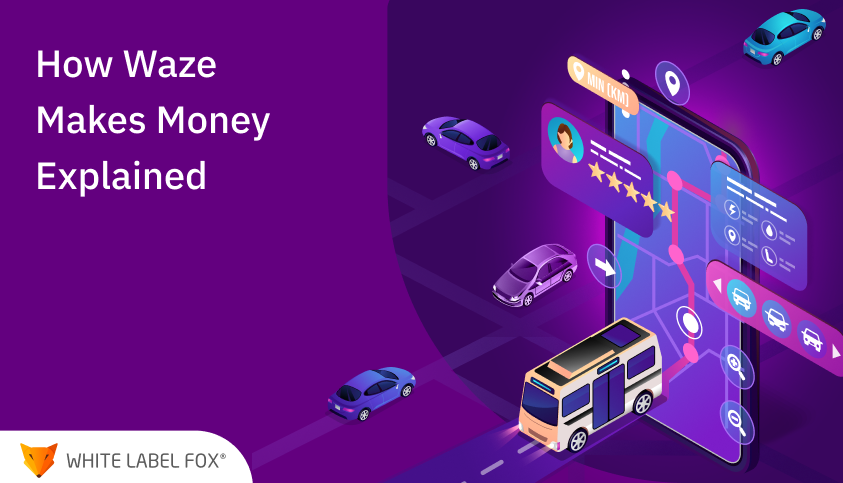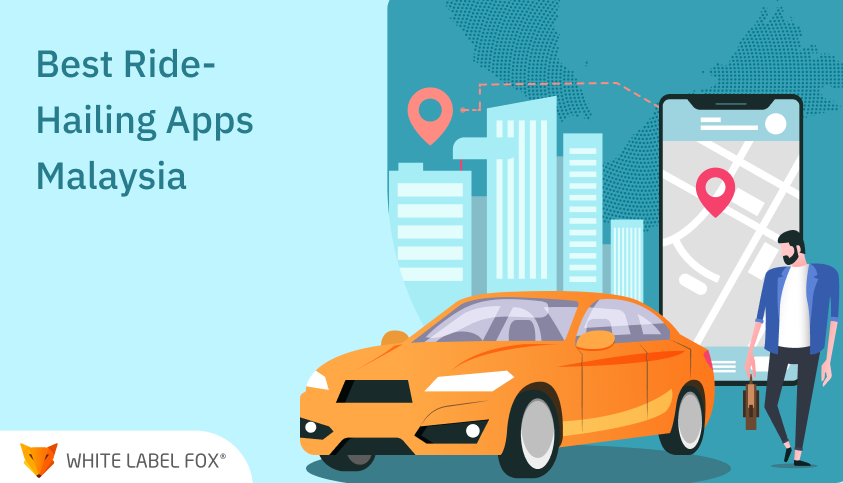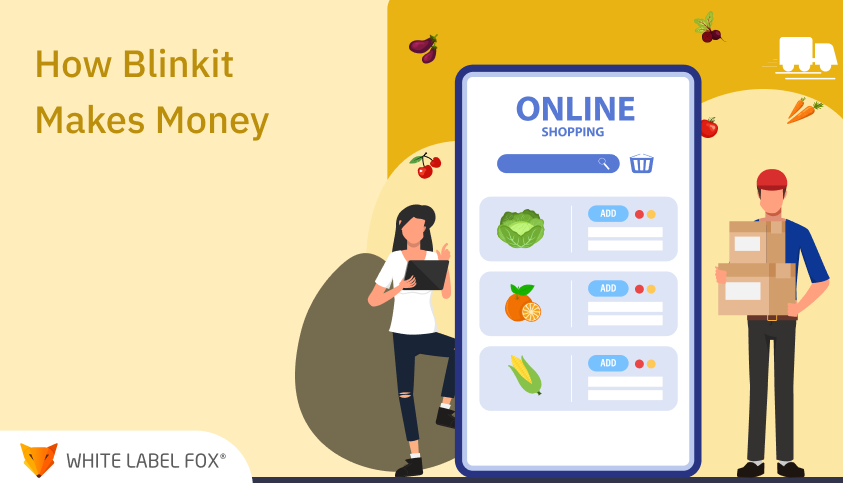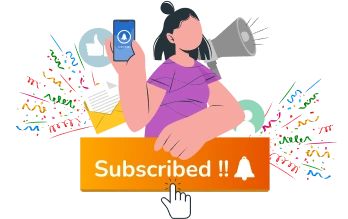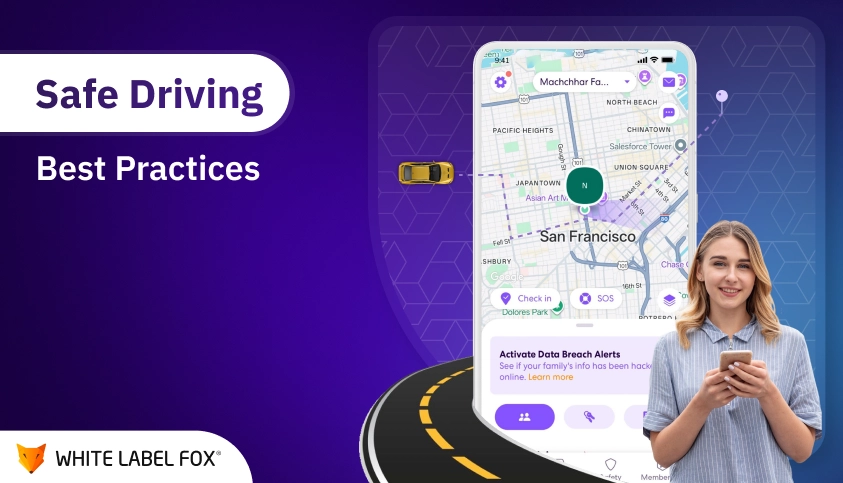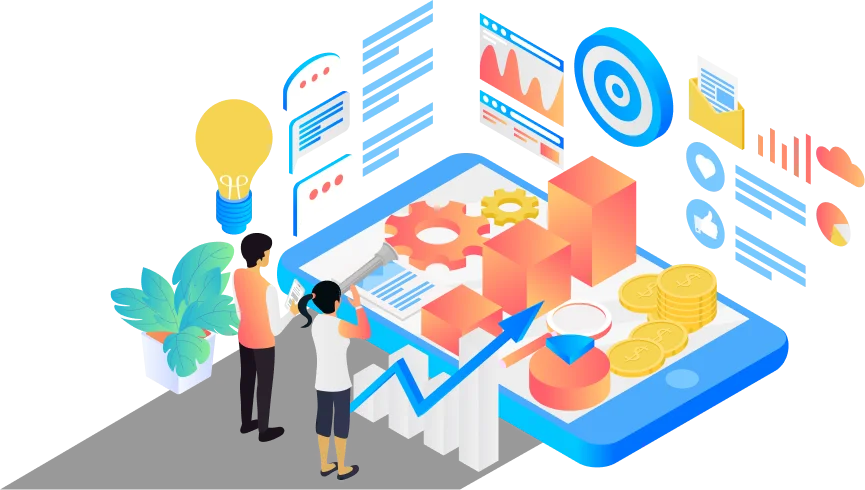Interested in knowing how Waze makes money? Find out here.
When was the last time you regretted your decision to take a route that had two-hour-long traffic? It wouldn’t be that long ago I bet. Such long traffic jams have become a regular thing for many metro cities. Google Maps has a feature that highlights the roads with high traffic. This feature helps many daily commuters to avoid jams. But there’s an even more powerful app that not only offers real-time traffic congestion information but also suggests optimal ways to reach your destination.
Yes, we are talking about Waze. The navigation app has received an immensely positive response since its launch and now stands second to Google Maps in the global navigation app usage rank. Today, Waze caters to over 140 million users in 180+ countries over the world. The credit for its popularity largely goes to its community-driven approach and real-time information.
Waze users can report accidents, police checking, traffic jams, construction, and other such hurdles within the app and let other users know about them. This is where Google Maps falls short. The Waze community’s collaborative efforts give this app a unique aspect. Besides, the navigation app itself keeps updating the map data with real-time insights like traffic and optimal alternative routes.
All these are offered for free. Just like Google Maps, Waze services are completely free. While Waze is a Google-owned product, it still works as a separate navigation app as of this writing. Google has various revenue streams for its Map product. So, you might think, how does Waze make money then? Let’s find out in this article below.
Navigate The Ride-Hailing Sector With Uber Clone
Let’s create an Uber-like application and drive your ride-sharing business to success.
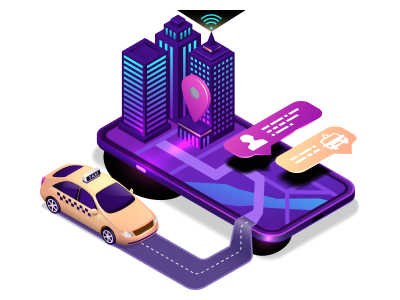
How Did the Waze Come Into Existence: History of Waze App
The inception of Waze dates back to 2006. Shabtai was struggling to use the navigation system that his friend gifted him. At that time, Google Maps wasn’t widespread, and the problem with other navigation systems was that they used expensive GPS and built-in maps. They were just featured to show routes with no traffic jam indicator or other route delays.
Shabtai thought of building an app that not only shows the road for reaching the destination but also indicates congestion and suggests alternative routes. Necessity is the mother of invention, and Waze stands as its best example. In 2006, Ehud Shabtai came up with a community project called FreeMap Israel. The project aimed to build a digital mapping database of Israel with the help of its community users.
FreeMap Israel was the initial version of Waze, which was envisioned to help its users navigate an optimal way to reach their destination, avoiding traffic and other hurdles. The app would collect the real-time location data of active users through GPS and display the activity on the app. This would help other users to see which road has more traffic and find a route to balance the traffic flow.
In 2008, Shabtai created a company called Waze to commercialize FreeMap Israel. Initially, it had a slow start. The features were limited, and only a few users were active. But, in the next year, it gathered about 80,000 users, kickstarting its journey in the navigation industry.
The company hired a CEO, Noman Bardin, in 2009 and prepared to enter the US market. The CEO traveled to the United States to get support for the app’s Blackberry release, as well as the recently released iPhone, then most popular Nokia Phones, and Windows. At the same time, the company also gamified the app with a Pacman-like game with real-time rewards to boost user engagement.
The Waze app became available for the UK and US users in 2011. About 12 broadcast stations partnered with Waze to include its data in their traffic reports. This is when the Waze growth becomes exponential. It emerged as the second most popular navigation mobile application, being just behind Google Maps. However, in 2013, Google bought the company for $1.3 billion.
The company is the second most popular navigation app around the world. It currently has $140 million active users globally. With its community-driven model and real-time services, Waze was able to generate $400 billion in revenue in 2022. But if it is free, how does Waze make money then? Let’s find out below.
How Does Waze Make Money: Understanding Waze Revenue Model
Like Google Maps, Waze is completely free. It doesn’t charge even a penny from its users. However, thanks to its unique revenue model, it manages to make money through multiple revenue streams. In this section, we will go through each revenue-generation model the Waze app uses.
Displaying In-App Advertising
Advertising is the main source where Waze makes money. And no, we are not talking about displaying ads from Google or other such ad service providers. Instead, Waze has its own AdSense-like online advertising model where local brands promote their stores to the users driving on the road.
Businesses can display their ads when the drivers are driving their way to the destination. Just like AdSense, businesses can decide on monthly ad expenses and control how much they want to spend on advertising. This gives restaurants freedom on their ad budget. Currently, there are three advertising models businesses can use. Let’s quickly look at them.
I. Branded Pins
If you’ve ever used Waze, you might have noticed the inverted drop-shaped icon around your route. It’s a branded pin that makes the brand’s location. Yes, it’s an advertisement. When a user drives by a specific location, the nearby advertised businesses pop up on their screen. These are interactive ads with several action buttons.
If a user can tap on the pin, you can see information about the brand and the route for reaching its outlet. Users, if they want to visit the store later, can select the “Save For Later” option. Either way, branded pins help local businesses raise brand awareness and drive customers to their outlets.
II. Zero Speed Takeovers
Businesses can display digital billboards on the user’s screen to motivate them to visit their outlet. When the vehicle reaches zero speed for more than 3 seconds, meaning it stops, a full-screen ad pops up. The ad offers turn-by-turn navigation towards a store, along with several other options.
The ads usually display limited-period offers to encourage users to visit the store right when they see it. If a user decides to visit the store, they can tap on the “Drive There” button, and Waze will highlight the route to reach the location without any hassle.
III. Promoted Search Ads
Same as Google Maps, Waze also displays promoted searches when a user searches about businesses on the app. The promoted brands are displayed at the top of the search results. Top-most results have the highest chance that users would visit them. Therefore, promoted search ads boost brand visibility and increase the likelihood of getting customers through advertising. This is a great feature for brands who are looking for on-the-go customers since being found on Waze is easier with a simple search.
Advertising is the main revenue source for Waze. However, it has other revenue schemes, too. Let’s check out other ways Waze makes money.
Monetizing User-Generated Data
The second-most revenue-generating stream where Waze makes money is monetizing user’s data. Every day, millions of users input real-time data in the app. Additionally, Waze itself collects location-based data through GPS tracking. It’s a well-known fact that data plays an important role for model businesses in their decision-making. Hence, Waze leverages this data to generate another revenue stream for its business.
The app earns with this data by offering analytics for its businesses like advertisers, city planners, and local government. Data helps these organizations better understand traffic situations around the town and customer behavior so that they can target specific user bases and optimize their business operations. However, Waze takes care of user’s privacy and anonymizes the data before providing its services to other businesses.
Partnering With Other Brands
Waze partners with businesses to earn. For example, currently, it has partnered with Lyft and Uber (both are ride-hailing giants) to let its users book a taxi from the Waze app itself. How does Waze make money here? Whenever the user hires a cab through Waze, it earns a commission from these ride-hailing services. Additionally, Waze has also partnered with restaurants, gas stations, and other businesses that offer its users discounts and exciting deals. These partnerships not just help Waze make money, but also enhance user engagement with incentives and added benefits.
Integrating In-Car Navigation System
The main functionality of Waze is to offer its users a seamless navigation experience while they are driving. So, it makes sense to implement navigation systems into the vehicles themselves. The navigation app service-providing company has partnered with a few car manufacturers, in which Waze allows its map to be accessed from the vehicle’s dashboard. This offers car owners ease and convenience in finding the best routes for their destinations, without relying on mobile phones. For this, Waze charges licensing fees or revenue-sharing agreements. It’s a small but significant revenue stream for Waze to make money.
Bluetooth Beacons
It’s hard for a navigation system to track its users with low or zero GPS connectivity. To tackle this, Waze launched the Bluetooth beacon program, where it sells Bluetooth beacons (small Bluetooth sensors) to municipalities and private tunnel operators, who can install these sensors in low network areas.
What does it do? It helps Waze stay connected with the user even in areas that receive low network. Okay, but why would the local government buy these sensors from Waze? Well, citizens aren’t the only users who use Waze for navigation. Some governments, too, utilize Waze’s powerful navigation system to monitor traffic. Waze installs these beacons and takes care of maintenance, too. So, it makes sense why local authorities would join this Bluetooth beacon program.
Referral Fees
The referral program is another way Waze makes money. It promotes other products like music apps in the app and earns a referral bonus when someone joins the program through its link and pays for the service or product. In 2021, Audible partnered with Waze to offer Waze users free access to Audible books for two months. In this, Waze received a certain amount of referral fees (the amount isn’t disclosed) whenever its user purchased an Audible subscription through the referral program.
How Does Waze Work: Waze Business Model Explained
Billions of people around the world use Waze to check out the traffic on their way and find the best road to avoid that. Waze gives real-time traffic updates, meaning it shows you live traffic ahead of your way. But it doesn’t just stop there. It also offers the best optimal route to pass that traffic and reach your destination in less time.
GPS is another amazing invention after smartphones. People who use smartphones can download Waze from app stores, provide location-accessing permissions, and start their journey. Waze uses both user-generated data and GPS-tracked information to offer its navigation services. Here are complete details on how Waze works.
User Inputs the Data
Waze largely relies on the data their active user provides while they are on the roads. This data includes the user’s current location, destination, and planned route, and other information like accidents, traffic jams, police traps, construction, blocked streets, climate conditions, and more. The app has built a community of people who share this data to let other drivers know about possible problems they could find on the route.
Waze Collects the Data
Although users are the main contributors to the information you find on Waze, the navigation application also gathers data anonymously to improve its services. It gathers location-based data from its users. With this data, Waze monitors live traffic flow and traffic jam patterns and provides accurate information about the route through data analysis.
The Collected Data is Analyzed
The collected data goes through analytic algorithms, which help create detailed maps of traffic situations. Waze offers a real-time navigation facility, so this information is analyzed in real-time scenarios. When analyzing the collected data, the navigation app considers various factors like road speed, traffic volume, user reports, and historical data to find out the current situation of the road.
Waze Suggests the Best Route
The analyzed data helps determine the best route. When a user starts their journey, they input their destination, and based on this, Waze offers optimal route suggestions that users can take to avoid jams and other hurdles. A lot of factors like distance, travel time, and traffic conditions go into the recommendation algorithm. With all these, Waze aims to find the quickest way for its user, to take every predicted change, that happens in the traffic, into account.
The App Offers Real-Time Updates
As users keep using the app, Waze continuously updates its location data. The app constantly monitors traffic information and adapts its route suggestions. That’s just from Waze’s side. Users as well, keep on reporting problems they face during their ride. This keeps other users informed about potential blocks and delays en route. The collaborative and contributive approach makes Waze thrive and keep serving its community.
Is Building an App Like Waze a Profitable Business Idea?
Yes, building a navigation app like Waze can be a profitable business idea. The navigation app market is huge. As more and more people turn to Map apps for navigation and finding local businesses, experts have estimated it to reach $36.6 billion by 2028. But how much money a Waze-like app can make?
Well, that depends on the revenue model you decide for your app. Waze doesn’t charge for its core service, which is map navigation. However, it follows a diverse revenue scheme that includes advertising, car-pooling, partnerships, Bluetooth beacon selling, car system integration, and referral programs. Since it has a global presence, it’s easier for Waze to make money through all these revenue-generating programs.
However, for startups, it might not be possible to create such a diverse earning scheme. In that case, you can start with advertising and expand your revenue model as you grow. The market is already quite saturated, so you need to offer a unique feature set and have strong marketing tactics to engage users and build your brands. Find a partner that provides technical support in building the navigation application.
Build a Waze-Like App With White Label Fox
Building GPS-tracking applications can be challenging. However, with high-end and comprehensive tech support from a reliable on-demand app development company like White Label Fox , you can bring your app idea to reality and innovate in the navigation app industry. The navigation app sector has much potential for budding entrepreneurs and established organizations.
You just need a technical partner to build a Waze-like application with powerful features and robust GPS-tracking capabilities. Developers at White Label Fox have extensive experience with GPS-based apps since we have helped various global clients with Uber-like on-demand ride-hailing application development.
GPS-based applications require strong capabilities to implement tracking features, and our development team is an expert in it. You just need to share your app requirements and leave everything to us. Our experts will get back to you with a complete app development roadmap with milestones and a customized quote. Plus, you will get a free consultation call where you can resolve all your doubts before you get started with the development. Get A Free Quote Now.
Frequently Ask Questions
Waze is a GPS navigation app that provides real-time driving
directions
based on community-driven data. It uses user-generated information
such
as traffic conditions, accidents, and road closures to help drivers
avoid delays and take the most efficient routes.
Waze generates revenue primarily through advertising. It offers
location-based ads, allowing businesses to target drivers in
real-time
with relevant promotions, such as gas stations, restaurants, or
retail
stores near their routes. Waze also monetizes its data and offers
subscription services for enhanced user features.
Waze’s key revenue streams include:
- Advertising: Sponsored search results and location-based
advertisements.
- Waze for Business: A service that helps local businesses
promote
themselves through Waze’s app.
- Data Licensing: Selling traffic and location data to other
companies for analytical and research purposes.
- Subscription Models: Premium services, such as Waze Carpool
for
ride-sharing and exclusive features for drivers.
- Advertising: Sponsored search results and location-based advertisements.
- Waze for Business: A service that helps local businesses promote themselves through Waze’s app.
- Data Licensing: Selling traffic and location data to other companies for analytical and research purposes.
- Subscription Models: Premium services, such as Waze Carpool for ride-sharing and exclusive features for drivers.

